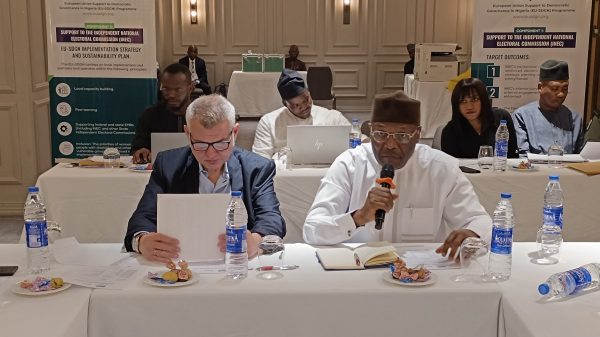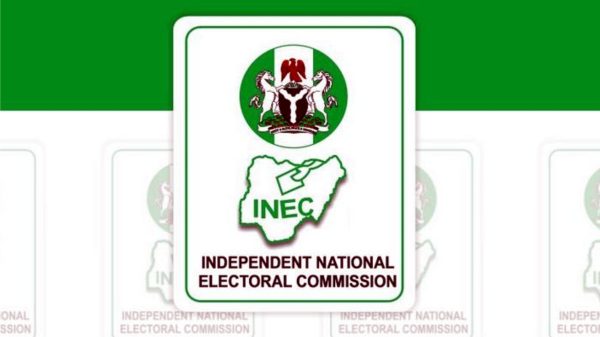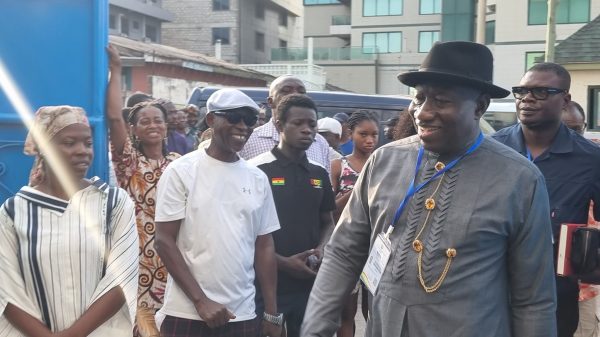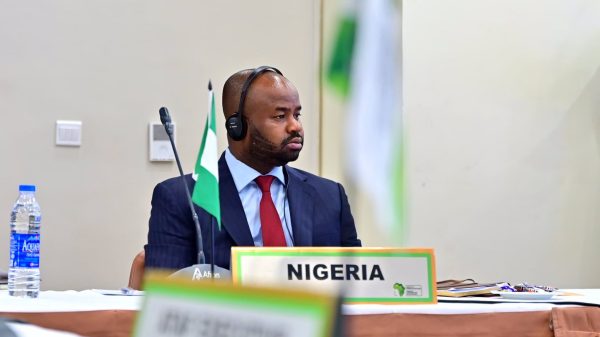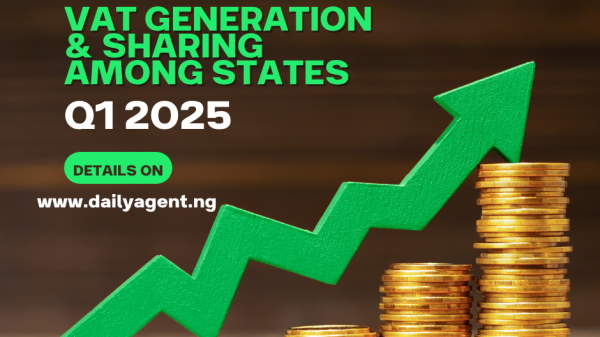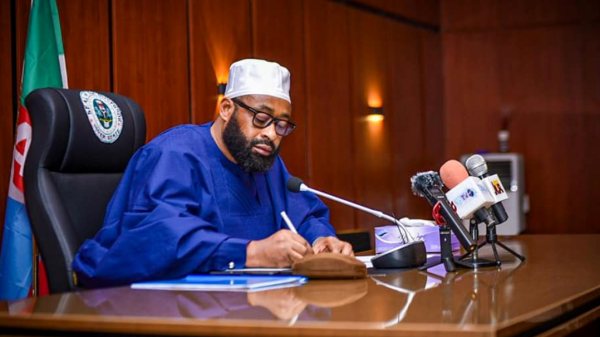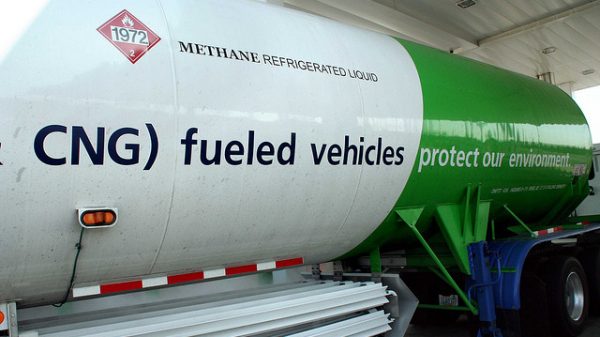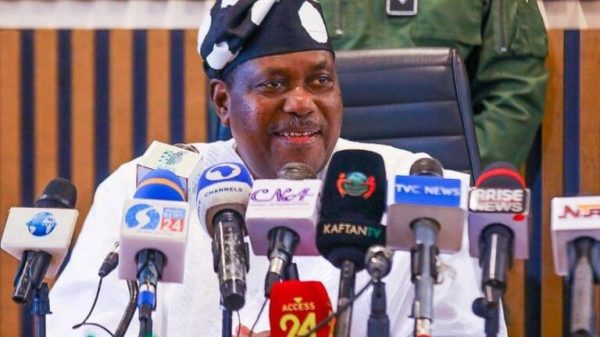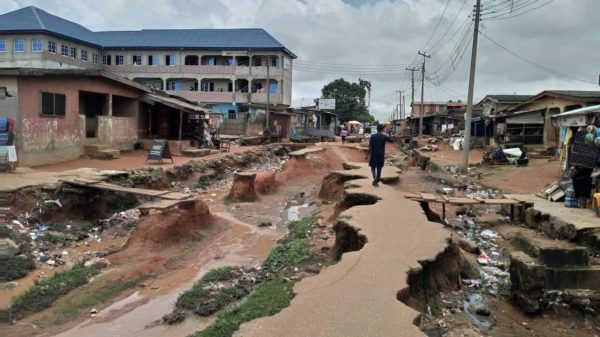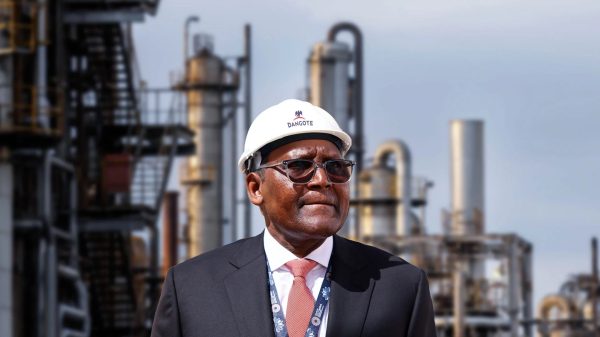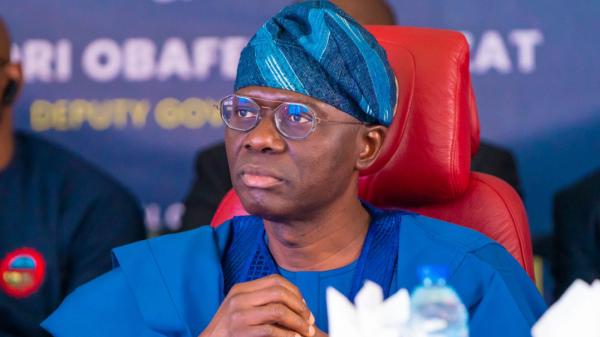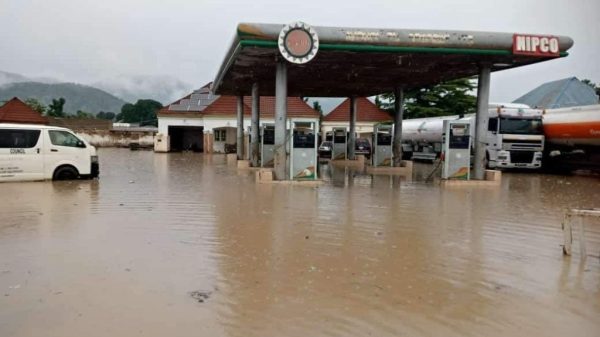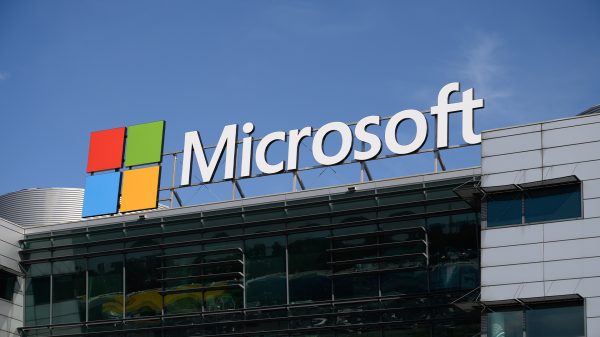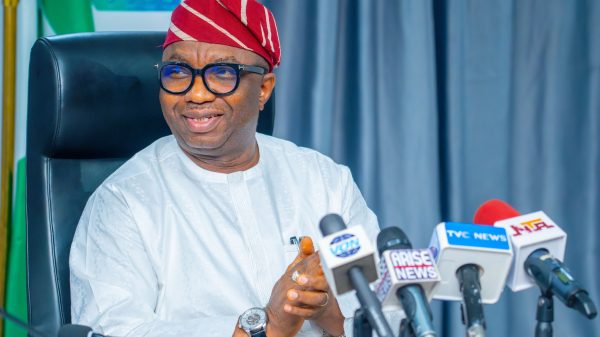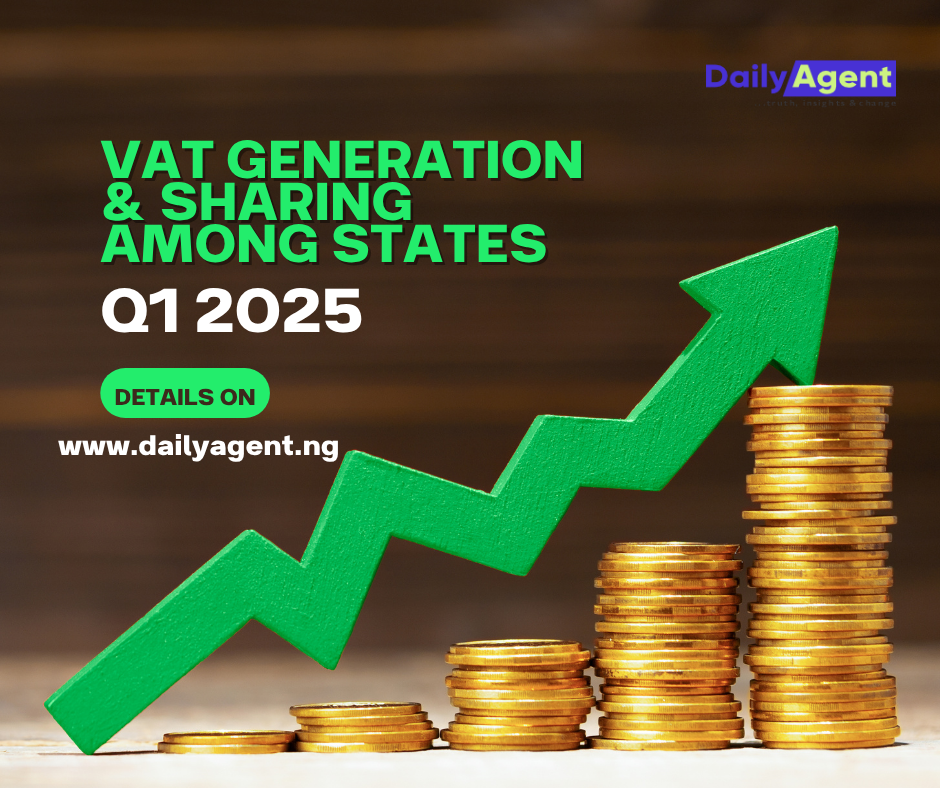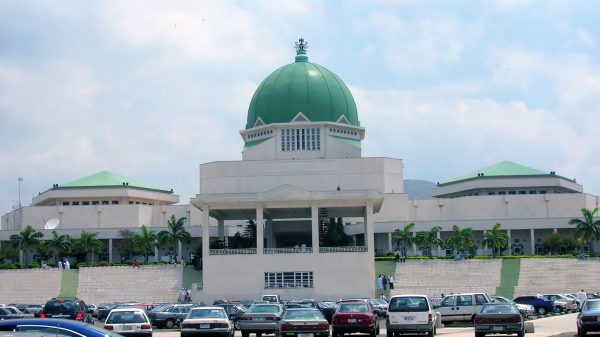Speech Delivered by Oluseun Onigbinde at the 25th Annual Convention and 24th Annual Lecture Series of the Alumni Association of the Federal University of Agriculture, Abeokuta, Ogun State
The Pro-Chancellor, the Vice-Chancellor, the Members of the Governing Council, the Deans of Colleges, the Heads of Departments, the President of the FUNAAB Alumni Association, FUNAAB Alumni, Distinguished Students, Ladies and Gentlemen of the Press,
On this great occasion, let me begin by congratulating our new 7th substantive Vice-Chancellor of this distinguished University, Professor Olusola Babatunde Kehinde. I wish you a very successful tenure and pray that the Almighty will grant you the wisdom and good health to lead this revered citadel of learning to new heights. As an alumnus myself, I witnessed the tenures of Professor Israel Folorunsho Adu and Professor Olaiya Balogun, and in hindsight, they delivered well on their duty.
With your permission, I make this presentation to my alma mater, the Federal University of Agriculture, Abeokuta, with utmost pleasure and every sense of duty and responsibility. I know my classmates, the graduates of 2007, will find the term “Federal” new and surprising. On my part, I have accepted this new status as a consequence of the growth that this institution has gone through.
Fifteen years ago, I graduated from this ivory tower with dignity, having satisfied the requirements in character and learning. I had a turbulent ending here with my final year project, but I am always glad to be the pioneer set of the College of Engineering introduced in March 2002. The creation of the College of Engineering was this institution’s labour to include engineering in its academic offers. And I must commend the visionaries who, through such exemplary foresight, gave me an opportunity to walk through these walls boldly.
I confidently say that while I was here, despite the usual discomfort of student life, I was proud of the opportunity to learn and seek the company of friends and lecturers. Let me not forget that I passed through this University as a “whole” student, not a student hunting for grades. I was a member of the Student Representative Assembly for three years, head of the student chapter for the Committee for the Defence of Human Rights for three consecutive years, second faculty President for the Nigerian Universities Engineering Student Association (NUESA), and the first runner-up in UNAAB SUG election in 2006, an exercise I lost to Engr. Raji Mustapha of blessed memory.
Please allow me to state that my interest in Information Communication Technology stemmed from this University, and if you further indulge me, I will dedicate this lecture to the rare and amazing Professor Olusegun Osinowo, who supported my interest in hosting a successful UNAAB ICT conference, right in the College of Animal Sciences (COLANIM) hall in 2007. I am happy that the Alumni Association has accepted the dynamism that has enveloped the world and also seeks to apply emerging technologies of Artificial Intelligence, Big Data, and Blockchain in agriculture and its entire value chain.
Why is this necessary? We are a world in a deluge of data—historical and current observations— that can constantly guide us on how to do things better. How do we use less input to achieve the highest output while protecting the environment and humans? It is not the number of herds a farmer possess or the size of their arable land that counts, it is what they produce with these that matters. How efficiently can these produce a profitable output for the farmer? While mechanization, genetically modified seed science, and other initiatives have been transformative for agriculture, we are at the cusp of another opportunity to advance output while applying the minimum required effort and inputs. Agriculture is trying to answer questions on maximizing inputs for improved productivity, profitability, and environmental sustainability.
According to the 2019 Poverty and Inequality Report, there are 82 million poor Nigerians (40% of Nigerians). The NBS 2019 Poverty and Inequality Report checks a few assumptions that show that poverty is rife in rural areas. What is sorely profound in the report is that households engaged in agriculture – especially at subsistence levels – did not show any significant effect on their spending power, and also, educational status for the head of the household has a relationship with the level of poverty in a household. What does this mean? There is a different kind of agriculture that can deliver optimal value.
The African Development Bank’s President, Akinwunmi Adesina, mentioned that “We (Africans) must also turn all of the rural areas of Africa from what I call zones of economic misery to zones of economic prosperity, and that can only happen when we get agriculture working. And so the work ahead of me is to get countries to understand that agriculture is not a way of life, agriculture is not a development activity, agriculture is a straight line business.”
If Agriculture is to become a business to make meaning in our lives, it must be at the forefront of cutting-edge technology, as this lecture will reveal. Before we proceed, it is important that we define these terminologies.
Artificial Intelligence (AI) refers to the development of computer programs and systems that can perform tasks that typically require human intelligence, such as visual perception, speech recognition, decision-making, and language translation. AI systems are designed to learn from experience, adjust to new inputs, and perform tasks accurately and quickly. AI can be divided into several subfields: machine learning, natural language processing, robotics, computer vision, and expert systems. AI aims to develop machines that can learn from experience and improve over time, similar to how humans learn and develop their skills.
Artificial Intelligence (AI) is transforming various industries, and agriculture is no exception. The use of AI in agriculture has increased in recent years, bringing about significant improvements in the industry’s efficiency and productivity.
There are different types of Artificial Intelligence, including:
Reactive machines: These machines do not have any memory or past experiences. They simply react to current situations and make decisions based on them.
Limited memory machines: These machines have limited memory and can use past experiences to inform their decision-making.
Theory of mind machines: These machines can understand and interpret human emotions, beliefs, and intentions.
Self-aware machines: These machines have a sense of self and can understand their own existence.
AI has numerous applications in various fields, including healthcare, finance, manufacturing, transportation, and entertainment. Some examples of AI applications include:
Chatbots: AI-powered chatbots can provide customer service and support, answer questions, and help with troubleshooting. You will likely have a full conversation to resolve your issues on the phone with a machine, which can sometimes be frustrating. Still, we are dynamic enough to apply ourselves to the new wave.
Autonomous vehicles: Self-driving cars and trucks use AI to navigate roads, avoid obstacles, and make decisions based on real-time data. We are entering into a new era that is very transformative, and once the safety standards are fixed, we will easily apply this technology. My Hyundai Elantra can practically drive itself for around five minutes once it senses lane markings, making slight curves as necessary.
Fraud detection: AI algorithms can detect fraudulent activity in financial transactions and alert authorities.
Medical diagnosis: AI can analyze medical images and help doctors diagnose diseases more accurately.
Personalized recommendations: AI algorithms can analyze user data to provide a personalized product, service, and content recommendations.
Artificial Intelligence (AI) has the potential to revolutionize the agricultural industry, which has been a primary source of food and livelihood for centuries. AI technology can increase crop yields, reduce waste, and help farmers make better decisions, increasing efficiency and profitability. The impact of AI on agriculture can be seen in various aspects, ranging from crop management to livestock care, from supply chain management to precision agriculture.
However, AI relies on trained models to act or make decisions based on sufficient information. This means a huge trove of data is required to make decisions. This is where Big Data comes into the picture. Big data refers to enormous and complex data sets that cannot be effectively processed using traditional tools and techniques. These data sets are often characterized by the “3Vs”: Volume (a large amount of data), Velocity (the speed at which data is generated), and Variety (different types and formats of data).
Big data sources can come from various places, including social media, sensors, machines, websites, and other digital systems. These data sets can be structured, semi-structured, or unstructured, containing valuable insights and information for businesses, governments, and organizations. Big data analytics can help organizations gain valuable insights and make data-driven decisions to improve efficiency, reduce costs, and enhance customer experiences. The processing and analysis of big data require specialized tools and techniques such as distributed computing, data mining, machine learning, and predictive analytics. It is essential to ensure that big data is collected, stored, and analyzed responsibly and appropriately to protect individuals’ privacy and prevent data misuse. Big data has the potential to revolutionize agriculture by enabling farmers to make more informed decisions and optimize their operations. By collecting and analyzing large amounts of data, farmers can gain insights into everything from soil health and weather patterns to crop yields and market trends.
Blockchain is a digital ledger technology designed to store and share information securely, transparently, and in a decentralized way. It was first introduced in 2008 as the underlying technology behind Bitcoin, a digital currency. At its core, a blockchain is a distributed database that stores information in blocks. Each block contains a set of transactions or data linked to the previous block in the chain, forming a block of blocks or a blockchain.
One of the key features of blockchain is its decentralized nature, which means that it is not controlled by a single entity but rather by a network of users who collectively validate and maintain the integrity of the data on the network. This makes it resistant to tampering, fraud, and other malicious activities. Blockchain uses cryptographic algorithms to encrypt and verify transactions to ensure the security of the network’s data. This means that each transaction is mathematically verified by multiple users on the network, making it very difficult to falsify or manipulate the data.
In addition, blockchain technology can enable smart contracts, which are self-executing contracts, with the terms of the agreement between buyer and seller directly written into lines of code. This can automate processes and reduce the need for intermediaries, increasing efficiency and reducing costs. Overall, blockchain is a powerful technology that has the potential to transform many industries by increasing transparency, security, and efficiency.
Before diving further, we need to understand how AI, Big data, and Blockchain are used from a broad perspective and then learn how it applies to Nigeria and, specifically, FUNAAB.
Precision Farming
Precision farming involves using technology to monitor and manage crop growth in real-time. Farmers can collect and analyze data from sensors, satellites, and drones with AI to determine their crops’ best course of action. AI algorithms can help farmers identify areas of their land that need more or less water, fertilizer, or other materials. This information enables farmers to use resources more efficiently and make more informed decisions. Big data analytics can create precision farming techniques, such as precision irrigation and planting. This allows farmers to optimize resources like water and fertilizer and increase crop yields.
Here are some examples of precision farming:
Variable-rate seeding: This technique involves adjusting the seed planting rate based on the soil type, moisture level, and other factors. By using data to determine the optimal planting rate for each section of the field, farmers can improve crop yields and reduce waste.
Soil mapping: Precision farming uses soil sensors to create detailed maps of the soil properties, such as pH, nutrient levels, and moisture content. This information can help farmers identify areas of the field that require more fertilizer, water, or other treatments.
Precision irrigation: By using sensors to monitor soil moisture levels, farmers can adjust irrigation systems to deliver water only where and when needed, reducing water waste and improving crop yields.
Harvest monitoring: Precision farming can predict the optimal time to harvest crops based on crop maturity and weather conditions using sensors and machine learning algorithms. This can help farmers to maximize crop yields and reduce waste. Big data analytics can analyze data from sensors, GPS, and other sources to monitor crop yields. This information can help farmers identify areas of the field performing well or poorly and make informed decisions about crop management.
Overall, precision farming can help farmers optimize crop production, reduce waste, and improve sustainability by leveraging technology to collect and analyze data on crop growth, soil health, and weather conditions.
Predictive analytics & Supply Chain Optimization
Big data can help farmers predict weather patterns and other environmental factors affecting their crops. This information can help with adjusting planting schedules and making other management decisions. Big data can be used to optimise the supply chain, from tracking inventory levels to predicting demand for different crops. This can help farmers reduce waste and increase profitability.
Crop Monitoring and Prediction
AI is helping farmers monitor crop growth and health more accurately. Using machine learning algorithms, AI can analyze data from sensors, drones, and other sources to identify patterns and predict future outcomes. This technology can help farmers detect early signs of diseases or pests, which can help prevent the spread of these problems before they become emergency problems.
Furthermore, AI can help farmers predict crop yields and adjust their operations accordingly. Sensors and other monitoring tools can collect data on crop health and growth, allowing farmers to identify potential problems before they become large-scale. Big data analytics can analyze data from drones, satellites, and other sources to monitor crop health and identify potential problems such as disease or pest infestations. This information can help farmers to take targeted actions to
prevent crop losses and improve yields.
Autonomous Farming Equipment
AI has enabled the development of autonomous farming equipment that performs tasks like planting, harvesting, and crop spraying without human intervention. These machines use sensors, GPS, and other technologies to navigate and perform tasks accurately. Autonomous farming equipment can help reduce labour costs and increase efficiency. We are looking at driverless tractors in the future capable of seeding and harvesting by a single prompt.
Soil Mapping and Analysis
AI can help farmers analyze soil samples more accurately and efficiently. Using machine learning algorithms, AI can identify the nutrients and other factors that affect soil health, and big data analytics can analyze soil data from sensors, satellites, and other sources to create detailed maps of soil properties like nutrient levels, pH, and moisture content. Farmers can then use this information to determine the best course of action to improve soil health and optimize crop growth, identify areas of the field that require more fertilizer, water, or other treatments, improve crop yields and reduce waste.
Livestock Monitoring
AI can also be used to monitor and manage livestock. Sensors and other technologies can be used to track animals’ movements, health, and behaviour, which can help farmers identify potential health problems early. AI can also help farmers optimize feeding and breeding schedules, increasing efficiency and reducing costs. Overall, the impact of AI on agriculture is significant. Farmers can make more informed decisions, optimize resources, and increase efficiency using AI.
The use of AI in agriculture is likely to continue to grow in the coming years, and it has the potential to transform the industry in numerous ways:
Weather forecasting
Big data analytics can analyze weather data from sensors and satellites to provide accurate and timely weather forecasts. This information can help farmers make informed decisions about when to plant, irrigate, or harvest crops and reduce the risk of crop losses due to adverse weather conditions.
Supply Chain Management
Big data analytics can analyze data from sensors, RFID tags, and other sources to optimize the supply chain for agricultural products. This can help farmers reduce waste, improve efficiency, and deliver fresh, highly nutritious food to consumers. Blockchain technology can potentially transform the agriculture industry by increasing the supply chain’s transparency, traceability, and efficiency. One of the most significant benefits of blockchain in agriculture is the ability to track products from farm to table. Blockchain can provide an immutable record of each step in the supply chain, from planting and harvesting to distribution and retail. This level of transparency can help ensure food safety, quality, and authenticity.
Blockchain can also help small farmers access financing and reduce the risk of fraud. By creating a digital record of farm activities, blockchain can provide lenders with real-time insights into a farm’s operations, improving the accuracy of risk assessments and increasing the likelihood of financing.
Smart contracts, a key feature of blockchain technology, can also automate payments to farmers, reducing the time and cost of intermediaries and providing farmers with more timely payments.
Finally, blockchain can enable consumers to make more informed purchasing decisions by providing access to information about purchased products’ origin, production methods, and sustainability. This transparency can help build consumer trust and promote sustainable farming practices.
It is good that we find the best-in-class examples of using artificial intelligence, blockchain, and machine learning to move from theory to practice. In 2020, a French startup, SpaceSense, announced that it raised a seed offering of one million Euros to democratize “satellite imagery in agriculture.” According to EU startups, “SpaceSense bridges the gap by simplifying the creation and deployment of AI models specifically designed to extract advanced insights from satellite images.”
Ultimately, SpaceSense is trying to use these technologies, typically combining satellite imagery with additional data such as weather factors (humidity, temperature, or wind speed). This improves knowledge of field conditions. Their work enables a more accurate determination of which crop is ideal for each area based on its properties, reinforcing decision-making with data. Such customizable planting is frequently an issue for large areas of land. AI can use crop statistics to generate the best precise planting map. Farmers have traditionally used geometrical or apparently natural field boundaries. AI can create more crop-oriented areas that are better suited to the soil. Satellite imagery can reveal which areas require more watering and which have abundance. This results in less loss of irrigation resources.
In the United States, Descartes Labs is also using satellite imagery to check the health of crops to fully understand those ready for harvesting or those needing more humidity or improved weather conditions. According to Verge, “Descartes relies on four petabytes of satellite imaging data and a machine learning algorithm to figure out how healthy the corn crop is from space.” Descartes has out-predicted the US Department of Agriculture in crop production due to its superior use of satellite technology. The expansion of nanosatellites meant that instead of turning to LANDSAT and other government-controlled platforms, startups could now access satellite imagery to assess crop performance. In Belarus, OneSoil provides a platform with GPU support that transforms satellite data into agricultural analytics for crop and soil conditions.
The company interprets satellite feeds to show how plants reflect different light waves, and it rates the state of plant growth based on this information for plots of land. I had previously mentioned using autonomous vehicles, and the answers are with us already. In Finland, an ambitious plan was created by the centre’s forestry specialists, using robots to carry out most of the upkeep work on forests on their own. They use aerial and lidar images to build forest inventories and catalogue tree measurements and species information. Then they gather, plan, and assess all the information a geographic information system will require for robots (GIS).
According to ESRI, the Finland Forest Service uses AI to collect data on young woodlands and seedling stands. In order to produce precise measurements of forest stands and to more accurately forecast forest inventory, GIS data, imagery sources, and climate and weather data sets are combined to provide clarity and improve decision-making. To extract the exact measurements that previously needed on-site inspection teams, machine learning algorithms are currently being tested. The job of AI will provide foresters and landowners with information about the volumes and species of wood without having to drive to the land to conduct an expensive, time-consuming inspection.
In Ecuador, a non-profit firm built a mobile device powered by solar technology to send the sound of chainsaws to communities, providing insights to them on illegal logging. Also, the United States National Space Agency has been involved in using satellite imagery to count trees. According to AI Business, “Researchers were able to use convolutional neural networks to count some 1.8 billion trees across the western Sahara and Sahel regions of West Africa, providing unparalleled insight into a flora crucial to local environments and the wider struggle against climate change.”
Many startups across the globe are also using Computer Vision—a key element in AI approaches—for ripeness control. Instead of farmers walking through a plantation, long-range drones and quality cameras are used to harvest crops. SolarXOne, a solar-powered autonomous flying car developed by French startup XSun, can cover up to 200 acres in a single flight. Their high-definition images provide the farmer with a detailed view of crucial farmlands. The multispectral images record detailed crop and soil conditions for stress and disease monitoring. They also use hyperspectral images to record the chemical composition of soils, which can capture pictures at 20 times higher wavelengths than multispectral images. The US-based company TerraClear has created an end-to-end rock-picking system using aerial sensing, machine vision, high-accuracy GPS, and advanced robotics.
Cromai, a Brazilian company, creates AI-based solutions to give farmers diagnostic data about their fields and crops. To further examine the crops, they use computer vision to capture their color, shape, and texture. Additionally, they offer diagnostic data gathered from sensors mounted on trucks or other pieces of machinery. Over 800 data scientists worldwide participated in a challenge organized by the International Conference on Learning Representations (ICLR) and Consultative Group to identify crop diseases using close-up photographs. This challenge aims to build a machine learning algorithm to accurately identify whether a plant is healthy and has stem or leaf rust. The bulk of data which threw interesting results were conducted in Ethiopia and Tanzania. AI computer vision solutions can also lead the way in crop sorting and grading, using optical data to check fruits due for the market.
The practical use of artificial intelligence in agriculture is not limited to crop production. In Korea, the state agricultural organization—Rural Development Administration—joined LG Innotek to develop an artificial intelligence-based machine vision technology that analyzes video images to accurately calculate the weight of chicken meat. RDA stated that it had developed an image database of approximately 56,000 different types of chicken meat and real data such as weight and breeding. Cameras placed in chicken meat farms will use machine vision technology similar to that used in smart farms to examine meat along the processing line for quality control. Lely’s i-flow project also uses an autonomous machine in milking cows, using their positional awareness to fully adjust their teat for increased yield. This is also close to the technology built by Gardar and Aðalsteinn Hallgrímsson who own a dairy farm in northern Iceland.
The technologies can transform the agriculture industry by enabling farmers to make more informed decisions about crop management, improve crop yields, and reduce waste. However, the efficacy is centered on collecting data in volumes for making intuitive decisions. Emerging agritech venture, CattleEye, has built an autonomous livestock monitoring platform that allows users to understand if cows are sick, lame, or going into heat through observation of body positioning. According to its founder, the technology can help farmers produce $400 more milk per cow, emphasizing that AI must drive efficiency and cost savings.
The most extensive use of AI in agriculture is still the robotic harvest picker, mainly used for apples in hard-to-reach areas. These technologies have been fully developed by Root AI and also Israel-based FFRobotic in optimizing harvesting. We have seen attempts to build fully robotic hydroponic systems to grow indoor vegetables by IronOx. In Australia, Swarm Robotics has developed a fleet of tiny robots that work in groups to complete tasks that were previously the domain of big tractors, sprayers, or planters. The robots are already in use by farmers in the area, who hire them for a fee per acre.
We have explored copious evidence of AI’s use, blockchain, and machine learning, and we have to ask the question, what are our examples in Nigeria? Who is building cutting-edge technology to transform agriculture and leapfrog it into the post-modern world? While Nigeria treats agriculture as the silver bullet for employment, it is pertinent to know that the future of agriculture will not be a mass-hiring vehicle. Less than 2% of the US Labour force is involved in agriculture, producing over $307.4 billion of output as of 2020. In fact, the proportion of workers in food production in China decreased steadily from 60% in 1991 to 25% in 2019. The future of agriculture is in automation and the intuitive use of data to generate insights at a machine level. The question before us, especially the leading academics, is how Africa will leapfrog this opportunity. How will FUNAAB be at the forefront of this incredible opportunity?
I am certain that I have left a lot of questions unanswered about the ethical element in the use of these technologies or the fact that jobs might actually be lost in the pursuit of these ideas. Well, in every civilization and advance of technology, we have been confronted with these conversations of machinery and intuitive technology taking the place of humans. Well, we are yet to reach that parity or take-over. AI, blockchain and machine learning will still rely on the data or trends provided, giving machines the right intelligence to make decisions. We cannot because of our interest to preserve jobs and remain cynical about this progress. Such will be unacceptable in an academic environment expected to be an oasis of knowledge.
I am excited about the rare opportunity to speak today and am more than committed to supporting budding ideas out of this university. A university doesn’t exist outside its community, and I am a proud believer that the alumni must do their best to support the growth of their alma mater. I would like to do my bit through the Proximity Trust, a family foundation that supports our roots. First, we will institute a prize to honour the best Engineering students with One million Naira annually. I will also join other alums of this school and university management to seek funding for Artificial Intelligence Lab in Agriculture, allowing undergraduate and graduate students to grow their interest.
I am also interested in seeking convergence and cross-fertilization of ideas across the university campus. In my time at the University, with no sense of disrespect, you are likely to hear students talk about Plant Physiology like a burden tossed to them because they could not possibly make Computer Science or other popular sciences. We are now at a convergence point where soil scientists, nutritionists, extension workers and animal experts might also have to learn coding, machine language, and other tools to belong to the emerging agri-conomy. We don’t have a choice except we wish to perpetuate either the back-breaking subsistence agriculture or mechanized systems, which can be far more efficient.
It has been a wonderful experience with you, and I am more than proud to give the 24th lecture at this 25th alumni annual conference. I also bring greetings from my wife, Oluwaseun Agbelusi-Onigbinde, a proud alumnus of this esteemed institution. I pray that the University will continue to reach new heights and boldly lead in new frontiers to cement its position as Africa’s revered agriculture citadel of learning and research.
Thank you very much.
Oluseun Onigbinde, Director, BudgIT
April 29, 2023






